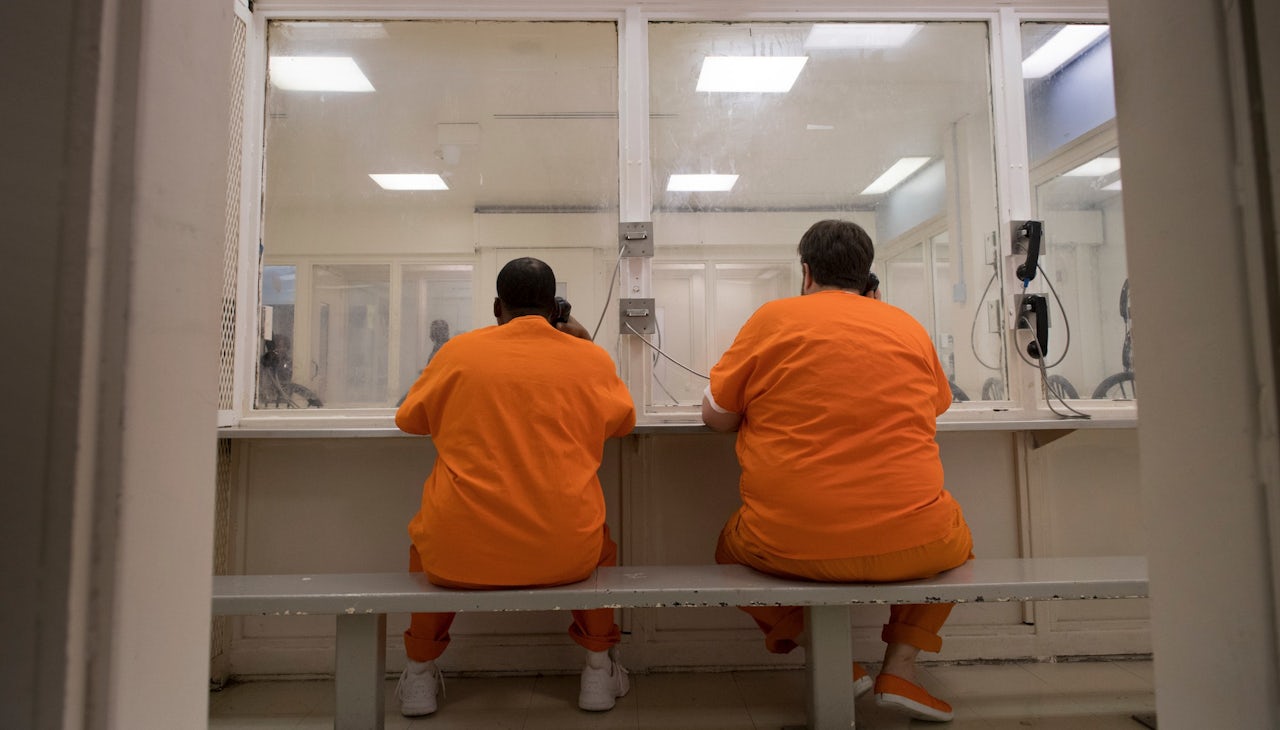Earlier this week, in response to the presidential press secretary’s fumbling of what seemed like a straightforward question, we investigated how various unemployment rates are defined and calculated. Economists wring their hands over whether to include discouraged workers, long-term unemployed, and part-time workers who want to work more. But there is one group that was excluded from every calculation we looked at: prisoners.
Incarceration causes people to lose their jobs and prevents them from finding jobs. So why aren’t they included in the unemployment rate?
The answer depends on what you’re trying to measure. If you’re trying to measure how hard it is for the average person to get a job on the open market, you might exclude prisoners since they can’t apply for jobs. If you’re trying to understand the causes and severity of joblessness, it makes sense to consider the 2.3 million people who are behind bars. Same for trying to assess how well the US economy is doing relative to its full potential — something economists call “slack” in the labor market, or the amount of unused or underutilized resources.
This is the Bureau of Labor Statistics’ reasoning for measuring unemployment in the first place: It’s bad when people don’t work, and it’s important to understand why they aren’t working in order to write policy that will reduce the number of people who are not working. From the BLS website:
When workers are unemployed, they, their families, and the country as a whole lose. Workers and their families lose wages, and the country loses the goods or services that could have been produced. In addition, the purchasing power of these workers is lost, which can lead to unemployment for yet other workers.
Addressing the issue of unemployment requires information about the extent and nature of the problem. How many people are unemployed? How did they become unemployed? How long have they been unemployed? Are their numbers growing or declining? Are they men or women? Are they young or old? Are they White, or Black, or Asian, or of Hispanic ethnicity? How much education do they have? Are they concentrated in one area of the country more than another? These statistics—together with other economic data—can be used by policymakers to determine whether measures should be taken to influence the future course of the economy or to aid those affected by joblessness.
By that reasoning, it seems logical to measure the prison population. If you’re interested in writing policy that prevents families from losing wages and the economy from losing purchasing power, why not include prisoners? If you’re interested in the reasons why people are not employed and the overall health of the economy, would you want to know how many potential workers are locked up in prison?
“When workers are unemployed, they, their families, and the country as a whole lose.”
Including prisoners in the official unemployment rate would be a logistical challenge, said Mary Bowler, an economist with the Current Population Survey (CPS) office at the Bureau of Labor Statistics. Her office generates the official unemployment rate based on phone and in-person surveys of 60,000 sample households each month. It would be very difficult to get on the phone every month with someone who was deployed overseas, which is why the CPS excludes active duty military. The same applies to the incarcerated, who don’t have consistent access to the outside world.
Furthermore, the employment status of prisoners is “murky,” Bowler said. Prisoners may be employed in a structured work program and may even earn more than a nominal wage, but they don’t participate in a competitive environment the way other job seekers in the civilian labor force do.
“We’re trying to get at people who are actively seeking and available for work, and a prisoner’s situation is very different from that,” she said.
Excluding prisoners means that federal unemployment numbers “overstate the economic well-being of the American population and understate racial inequality,” wrote Becky Pettit, a sociology professor at the University of Texas-Austin who specializes in race, inequality, and labor markets.
“Conventional economic indicators hide some of America’s most pressing, and vexing, economic challenges from view,” she wrote. “Many young, black men who haven’t finished high school are invisible in federal data sources because they are overrepresented in prison or jail. Acknowledging the invisible population and their needs and capacities is essential for devising a policy solution that will get all Americans back to work.”
Former prisoners also have more trouble finding employment after they get out. The CPS already breaks out veterans as a category in its employment report; it seems reasonable to include a subcategory for former prisoners, which would provide valuable data for assessing the complicated roots of unemployment.
And yet, even the non-traditional Non-Employment Index (NEI), an alternative rate that seeks specifically to measure slack, relies on the CPS’s definition of labor force and therefore excludes prisoners.
Most prisoners are not employed. So why aren’t they counted in the unemployment rate? Bowler’s first answer might have been the most telling: It’s always been that way.
